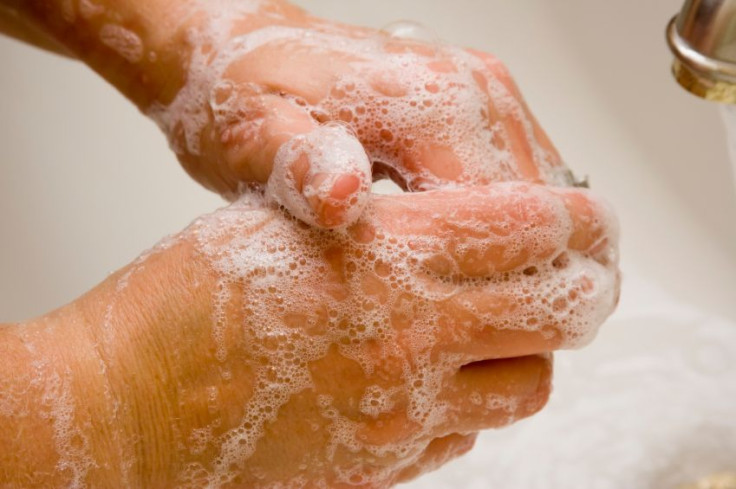Hand Washing With Antibacterial Soap Isn't Any More Effective At Clearing Bacteria Than Plain Old Regular Soap

Our antibacterial soap may be pulling a fast one on us, according to a new study published in the Journal of Antimicrobial Chemotherapy.
Conducting a series of relatively simple but novel experiments, including one with human volunteers, the study authors found that antibacterial soap containing triclosan, a frequently used antimicrobial, performed no better at killing bacteria under “real life” conditions than did regular soap.
Inspired by a proposed regulation by the Food and Drug Administration in 2013 that would have forced companies to actually prove their antibacterial soaps are safer and more effective than plain soap and water at preventing illness and/or the spread of infection, the researchers first decided to pit twenty commonly seen strains of bacteria against a soap product containing 0.3 percent triclosan, the maximum concentration generally accepted in countries across Europe, China, Canada, and Australia, as well as against the same soap formulation without triclosan.
To stimulate the experience of handwashing, they exposed the bacteria for a period of 20 seconds to a mixture of soap and water, making sure to perform their test at least twice, once with room temperature (71.6° F) water and again with hot (104° F) water.
“There was no significant differences in bactericidal activity between plain soap and antibacterial soap against any of the tested bacteria at either temperature and at an exposure time of 20 seconds. Neither was there a difference after exposure for 10 or 30 seconds,” they concluded. About the only silver lining was that there was eventually a significant effect seen among bacteria exposed to the antibacterial soap, but only after a whopping nine hours.
Interestingly enough, they also discovered that there was little difference seen in bug-fighting ability in either hot or tepid water. “These results refute the common belief that washing hands in warm water is more effective than washing in water at ambient temperature,” they wrote.
Not satisfied there, the researchers then upped the ante by persuading 16 healthy volunteers to rub their hands with a sample of Serratia marcescens, a bacteria commonly implicated in hospital-acquired infections, in order to actively test out which type of soap worked better afterwards at scrubbing it out. Once again, the difference between the two soaps proved to be negligible. “This result supports the data showing that antibacterial soap is no more effective than plain soap when used for hand washing,” they wrote.
The authors believe that the very nature of hand washing makes it improbable for triclosan to work in soap.
“[A]lthough the addition of triclosan to soap does provide antibacterial protection, the effect is not seen due to the short exposure time associated with hand washing,” they explained. “Secondly, the soap used in the present study contained surfactants such as sodium laureth sulphate, which may also play a role in reducing the bactericidal effects of triclosan.”
While the authors do note that triclosan may work better in liquid soaps or in higher concentrations, they’re also quick to remind us that previous reviews of the evidence surrounding antibacterial soaps in general have found only small or even no significant benefits to fighting bacteria when compared to regular soap. And other researchers have warned about the costs of using antibacterial soap unnecessarily, fearing that, among other problems, it may inadvertently quicken antibiotic resistance.
Likely as a result of the FDA pressure, the authors cite previous research of theirs showing that many soap manufacturers have stopped using triclosan in recent years, but it’s a change that hasn’t been made vocal to the rest of the public.
“Thus, both advertisement and consumer belief regarding the effectiveness of antibacterial soaps need to be addressed,” they concluded.
Source: Kim S, Moon H, Rhee M. Bactericidal effects of triclosan in soap both in vitro and in vivo. Journal of Antimicrobial Chemotherapy. 2015.
Published by Medicaldaily.com



























